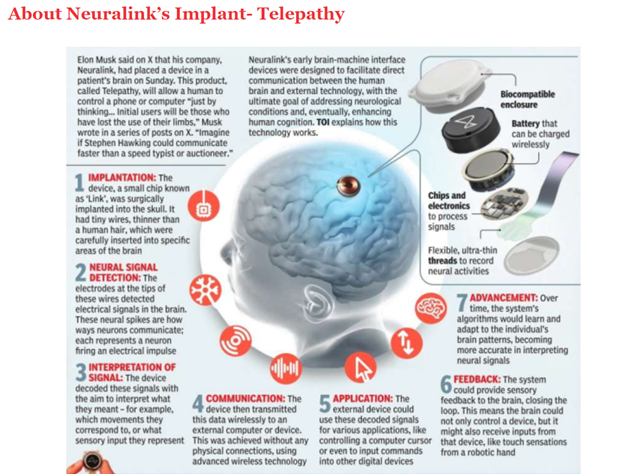1 Feb 2024 : Indian Express Editorial Analysis
Indian Express Editorial Analysis
1-February-2024
1. Marathon, not sprint
| Topic: GS3 – Indian Economy – Issues relating to growth This topic is relevant for Mains in the context of analysis of economic indicators, policy measures, and the broader implications for the country’s economic development. |
| Context: |
|
More about the news:
Resilience Amid Global Challenges:
- Despite facing challenges such as a sharp slowdown in agriculture and ongoing geopolitical uncertainties like the Russia-Ukraine conflict and Middle East crises, India is expected to maintain its position as the fastest-growing major economy.
- Various macroeconomic indicators, including a current account deficit within the safe zone, stable currency, and an anticipated decrease in headline inflation over the next quarters, contribute to a robust economic outlook.
Fiscal Policy Driving Post-Pandemic Recovery:
- Economic policies, particularly fiscal policy, have played a pivotal role in steering post-pandemic growth recovery.
- The shift from pandemic-focused welfare measures to a public investment-driven growth strategy has accelerated infrastructure development.
- Despite the positive impact on raising productive capacity, there’s a call for moderation in budgetary support to capital spending, emphasizing the need for fiscal rectitude, especially in an election year.
Growth Prospects and Fiscal Consolidation:
- The Finance Ministry’s review report anticipates the economy to grow close to 7% in the next fiscal year, with suggestions that India could potentially become a $7 trillion economy by the end of the decade.
- Medium-term growth prospects, as reflected in forecasts from multilateral agencies, show expectations of GDP growth moderating to 6.4% in the next fiscal year before accelerating thereafter.
- Achieving fiscal consolidation, targeting a 4.5% fiscal deficit as a percentage of GDP by 2025-26, is deemed feasible if growth remains robust.
Private Sector’s Role in Sustainable Growth:
- To ensure faster and sustained growth, there’s a crucial emphasis on the private sector taking a lead in investment.
- The government’s efforts to improve capacity utilization, implement the Production Linked Incentive (PLI) scheme, maintain a low corporate tax regime, and support medium and large-sized corporates’ healthy balance sheets are seen as factors that can revive capital expenditure.
- Lowering compliance costs and providing tax regime stability are identified as complementary measures to unleash a broad-based revival of the investment cycle.
Inflation Challenges and Agricultural Concerns:
- While core inflation has corrected quickly in India, headline inflation remains a concern due to high food inflation, influenced significantly by the underperformance of the agriculture and rural economy.
- Agriculture’s weight in GDP and its impact on food inflation necessitate supply-side measures falling under fiscal policy for effective control.
Climate Risks and Economic Challenges:
- India’s vulnerability to climate change is highlighted, with the review document pointing out the need for research, development, and complementary steps to adapt to climate change without compromising growth prospects.
- The “trade-off between energy security and economic growth versus energy transition” is recognized as a key challenge for the economy.
Policy Focus and External Resilience:
- Over the near and medium term, the review underscores domestic strengths, including healthy corporate balance sheets and the government’s focus on infrastructure build-up and digitalization.
- External markers for the economy are noted to remain resilient. Policymakers are urged to ensure sound macroeconomic fundamentals, fast-track skilling initiatives, pragmatic energy transition management, and a focus on reforms to transform the current growth uptick into a sustained marathon.
| What are the Different Ways of Measuring Economic Growth? |
Two Ways to Calculate Economic Growth:
Disparity Between the Two Methods:
|
| PYQ: Do you agree with the view that steady GDP growth and low inflation have left the Indian economy in good shape? Give reasons in support of your arguments. (150 words/10m) (UPSC CSE (M) GS-3 2019) |
| Practice Question: Evaluate the effectiveness of fiscal policies in post-pandemic recovery and recommend potential strategies for addressing the identified challenges. Support your answer with relevant data and examples. (150 words/10 m) |
2. MIND AND MATTER
| Topic: GS3 – Science & Technology – Development & their applications This topic is relevant for both Prelims and Mains in the context of critical analysis and discussion around ethical, regulatory, and societal aspects of emerging technology, specifically Neuralink’s brain-computer interface. |
| Context: |
|
More about the news:
BUILDING ON PAST BCI WORK:
- Neuralink builds upon the work of laboratories and companies predating it, dating back to the 1970s with the first Brain-Computer Interface (BCI).
- The wireless device implanted by Neuralink features a chip and arrays of electrodes, aiming to register thoughts related to movement.
- If successful, this technology could empower people with disabilities to control devices through their thoughts.
- However, Musk’s ambitious claims evoke a science fiction future, envisioning brain implants seamlessly merging with cognitive functions.
 Source: Times of India
Source: Times of India
PRIVACY AND REGULATION CONCERNS:
- Privacy emerges as a primary concern. Controlling the data extracted from brains and ensuring protection against exploitation are critical considerations.
- Similar to AI, regulations must evolve hand-in-hand with BCI development to safeguard individual privacy.
- Additionally, ensuring that significant medical technologies like BCIs do not become monopolies is crucial.
- Publicly-funded research can minimize costs for end-users, ensuring accessibility beyond those who can afford cutting-edge interventions.
TOWARDS RESPONSIBLE TECHNOLOGICAL ADVANCEMENT:
- Drawing parallels to the development of the Oxford Astra-Zeneca Covid vaccine, publicly-funded efforts reaching more people than private-sector counterparts offer a model for ethical and inclusive advancement.
- As BCIs approach potential mass use, involving experts, ethicists, and the public in a dialogue becomes essential to prevent misuse or overuse.
- BCIs, while representing a potential paradigm shift in human-technology relations, must navigate these pitfalls through responsible development and deployment.
| How does Neuralink function? |
Note – Neurons are nerve cells that use electricity and chemicals to send signals from your brain to the rest of your body to help it move, breathe, talk and eat. |
| Practice Question: Discuss the potential societal implications, ethical considerations, and regulatory challenges associated with the development and deployment of brain-computer interfaces, focusing on Neuralink’s recent milestone of conducting the first human implant. (250 words/15 m) |
For Enquiry

13 February 2024 : The Hindu Editorial Notes PD

13 Feb 2024 : Indian Express Editorial Analysis

13 February 2024 : PIB Summary for UPSC

12 Feb 2024 : Daily Current Affairs Quiz

12 Feb 2024 : Daily Answer Writing

12 Feb 2024 : Daily Current Affairs

12 Feb 2024 : Indian Express Editorial Analysis

12 February 2024 : The Hindu Editorial Notes PDF

12 February 2024 : PIB Summary for UPSC

10 Feb 2024 : Daily Current Affairs Quiz
Feb 2024 The Hindu 13 February 2024 : The Hindu Editorial Notes PD The Hindu Editorial
13-February-2024
1. A global alliance to bridge the gender equity gap
Topic:…
Indian Express 13 Feb 2024 : Indian Express Editorial Analysis Indian Express Editorial Analysis
13-February-2024
1. A science for us
Topic: GS2 – Governance…
feb 2024 PIB 13 February 2024 : PIB Summary for UPSC PIB Summary for UPSC
13-February -2024
1. Union Minister G Kishan Reddy inaugurate regional centre…
Daily Quiz 12 Feb 2024 : Daily Current Affairs Quiz 12 Feb 2024 : Daily Quiz…
mains answer writing 12 Feb 2024 : Daily Answer Writing Mains Answer Writing
12-February-2024
Q1) “Water scarcity threatens economic and social gains…
Daily Current Affairs 12 Feb 2024 : Daily Current Affairs Daily Current Affairs
12-February-2024- Top News of the Day
1. Great Indian Bustards give Nandyal a…
Indian Express 12 Feb 2024 : Indian Express Editorial Analysis Indian Express Editorial Analysis
12-February-2024
1. CLASSROOM VS COACHING
Topic: GS2 – Social…
Feb 2024 The Hindu 12 February 2024 : The Hindu Editorial Notes PDF The Hindu Editorial
12-February-2024
1. A privileged strategic partnership, without a gulf
Topic:…
feb 2024 PIB 12 February 2024 : PIB Summary for UPSC PIB Summary for UPSC
12-February -2024
1. Birth anniversary of Swami Dayanand Saraswati
Topic:…
Daily Quiz 10 Feb 2024 : Daily Current Affairs Quiz 10 Feb 2024 : Daily Quiz…



